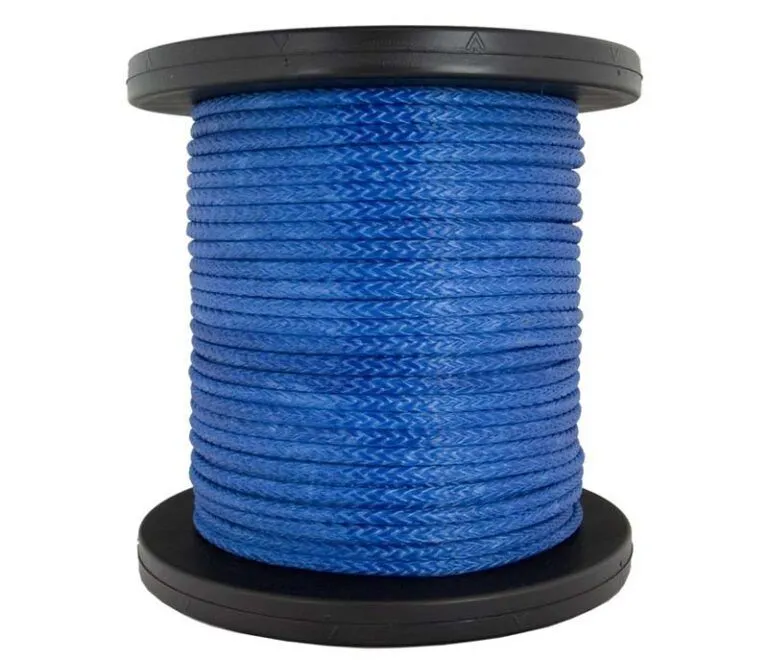Synthetic Rope— The Benefits and Limitations
Synthetic ropes are becoming increasingly popular in the rigging industry due to their various benefits over traditional ropes. These ropes are made of materials such as polypropylene, polyester, nylon, and aramid fibers. In this blog, we will discuss the pros and cons of synthetic ropes, their applications in rigging, and some trending hashtags related to the topic.
Benefits of Synthetic Ropes
- Lightweight – Synthetic ropes are much lighter than their traditional counterparts, which makes them easier to handle and transport.
- High strength – Synthetic ropes have a higher strength-to-weight ratio than traditional ropes, making them ideal for rigging applications where heavy loads need to be lifted or supported.
- Chemical resistant – Many synthetic ropes are resistant to chemicals and UV rays, which makes them ideal for use in harsh environments.
- Easy to splice – Synthetic ropes can be easily spliced, which makes them more versatile than traditional ropes.
- Floats on water – Many synthetic ropes are buoyant, which makes them ideal for use in marine environments.

Limitations of Synthetic Ropes
- Lower melting point – Synthetic ropes have a lower melting point than traditional ropes, which means they can melt under high friction.
- Abrasion resistance – Synthetic ropes have lower abrasion resistance than traditional ropes, which means they can wear out faster.
- Vulnerable to UV damage – Synthetic ropes are vulnerable to damage from UV rays, which means they can deteriorate over time if left exposed to the sun.
- Limited heat resistance – Synthetic ropes have limited heat resistance, which means they can be damaged by high temperatures.
- Expensive – Synthetic ropes are generally more expensive than traditional ropes, which can be a barrier to adoption in some industries.
Synthetic Ropes Applications
- Construction – Synthetic ropes are commonly used in construction for lifting heavy loads and securing materials.
- Marine – Synthetic ropes are commonly used in marine applications, such as mooring lines and anchor lines.
- Oil and Gas – Synthetic ropes are commonly used in the oil and gas industry for drilling operations and offshore rigging.
- Entertainment – Synthetic ropes are commonly used in the entertainment industry for rigging lights, sound equipment, and scenery.
- Sports and Recreation – Synthetic ropes are commonly used in sports and recreation, such as rock climbing and sailing.
Conclusion
Synthetic ropes offer many benefits over traditional ropes, including their lightweight, high strength, and chemical resistance. However, they also have some drawbacks, such as lower abrasion resistance and vulnerability to UV damage. Synthetic ropes are commonly used in a variety of industries, including construction, marine, and oil and gas. By following trending hashtags related to synthetic ropes, you can stay up-to-date on the latest developments in the industry.
Hercules Product Spotlight
Amsteel Blue Rope is a high-performance synthetic rope that is popular in various industries, including marine, construction, and transportation. It is made from high-strength Dyneema fibers, which provide exceptional strength and durability, making it an ideal choice for heavy-duty applications. 
Dyneema fibers are made from ultra-high molecular weight polyethylene, which is one of the strongest and most durable materials in the world. These fibers are incredibly lightweight, yet they are stronger than steel, making Amsteel Blue Rope one of the strongest synthetic ropes available today. Additionally, these fibers are highly resistant to abrasion, chemicals, and UV rays, making them ideal for use in harsh environments.
One of the significant advantages of Amsteel Blue Rope is its strength-to-weight ratio. It is up to 15 times stronger than steel, yet it is significantly lighter, making it easier to handle and transport. This lightweight characteristic also makes it more comfortable to work with, reducing the risk of injuries and fatigue among workers.
Another advantage of Amsteel Blue Rope is its flexibility. It has a low coefficient of friction, which means it is highly flexible and easy to manipulate. This flexibility makes it ideal for applications that require tight turns and complex rigging.
Amsteel Blue Rope is also highly resistant to stretch, which means it maintains its shape and strength over time. This resistance to stretch also makes it ideal for use in applications that require high tension, such as lifting heavy loads.
Finally, Amsteel Blue Rope is highly resistant to water absorption, which means it doesn’t weaken or degrade when exposed to moisture. This makes it ideal for use in marine applications, such as mooring lines, tow ropes, and anchor lines.
In summary, Amsteel Blue Rope is a highly versatile and reliable synthetic rope that offers exceptional strength, durability, and flexibility. Its unique combination of properties makes it ideal for use in various industries and applications, including marine, construction, and transportation. Whether you need to lift heavy loads, tow boats, or secure cargo, Amsteel Blue Rope is an excellent choice for your next project.
——————————————————————————————————————————————
The Hercules Group of Companies encompasses a wide portfolio of products and services across 7 diverse companies.


